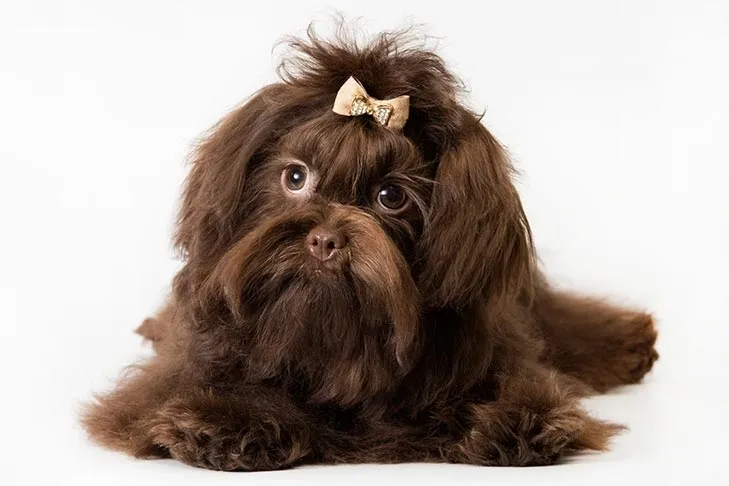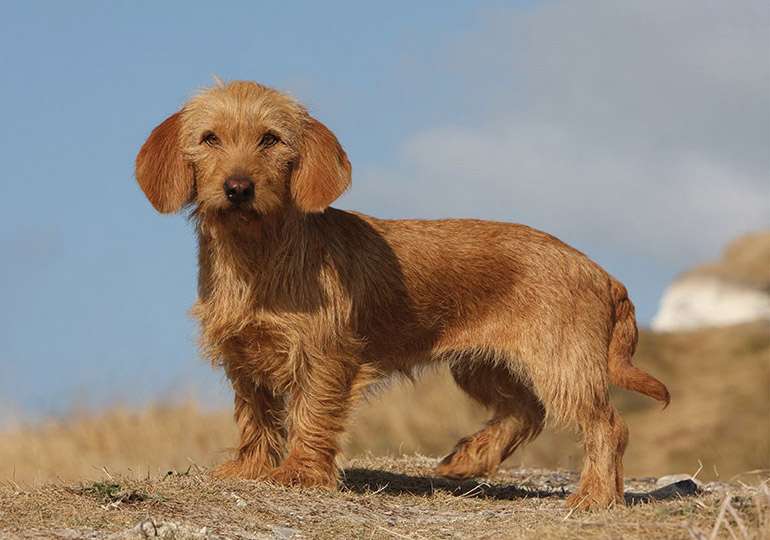
Description
The Russian Tsvetnaya Bolonka is a small toy breed. His body should be boxy, with his back not being longer than his legs and him having a square appearance. He has a long coat that ought to have thick curls or waves. Unwanted is a straight coat.
Origin/History
The Russian Tsvetnaya Bolonka is a product of Moscow and Saint Petersburg. These little dogs’ ancestors were gifts given to Russian aristocracy by Louis XIV of France in the 1700s. The Bolonka breed, sometimes known as Bolonki when used in plural, was created by mating Russian street dogs with companion dogs including Bichon Frise, Pekingese, and Bichon Frise.
Russian working dogs were renowned, not tiny breeds like the Bolonki, which were viewed as superfluous extravagances. But after Khrushchev came to power in the 1960s, things changed. Large working dogs became obsolete in Russian cities due to a lack of housing and a dramatic increase in flat living, which sparked a demand for smaller breeds.
Temperament
Bolonki are kind, even-tempered dogs who love their families and are friendly to outsiders. Children adore them for their diminutive size and their vivacious yet laid-back demeanour (and Bolonki adore them, too). These endearing dogs have the power to win over strangers and convert those who are unfamiliar with the breed into ardent admirers.

Care
Nutrition
Bolonki need a premium dog food that is suitable for their life stage (such as puppy, adult, or senior). A diet designed especially for small-breed dogs is a fantastic choice to take into account.
If they consume too many calories, all dogs face the risk of becoming obese. To avoid overeating, portion out their food using a measuring cup and keep rewards to no more than 10% of their daily calories.
Grooming
Bolonki’s gorgeous coats need frequent care to stay in tip-top shape. To prevent their hair from getting matted or tangled, brush it with a wide-toothed comb several times per week. Additionally, Bolonki require daily washing of their faces, beards, and moustaches. They can avoid having their hair irritate their eyes by tying it up in a bow on top of their heads.
Dental care is crucial, in addition to routine ear cleanings and nail trimmings. When Bolonki are puppies, begin a regular dental care regimen that includes at-home tooth brushing and professional cleanings to guarantee proper oral hygiene throughout their life.
Exercise
Tsvetnaya Bolonka, a Russian, is more of a lapdog than an athlete. These dogs still take pleasure in going on walks around the neighbourhood, visiting dog parks, and exploring their fenced-in yards. These tiny canines might also benefit from activities like fetch or hide-and-seek to help them burn off some energy.
To keep this clever breed engaged and active, provide opportunities for both cerebral and physical stimulation, like as games and puzzle toys. Bolonki might also take pleasure in sports like agility, tracking, rally, or competitive obedience.
Training
Bolonki are autonomous and intelligent, which can make training difficult. The best foundation for teaching this toy breed fundamental instructions (and new tricks) is a consistent training regimen that uses positive reinforcement and prizes. Bolonki needs regular socialization to help him feel at ease among new dogs, people, and environments.
Table





